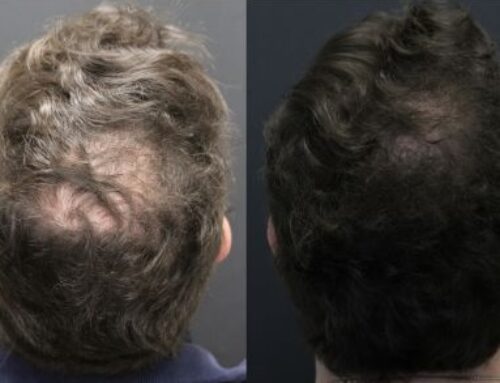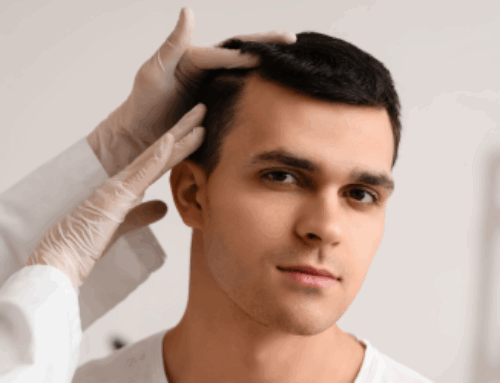Hair transplants are more popular than ever, but that doesn’t mean they’re risk-free. In fact, bad hair transplants are more common than most people realize, and they can leave behind permanent damage like wide scars, donor area thinning, or unnatural hairlines. If you’re considering a hair restoration procedure, it’s critical to understand what can go wrong and how to protect yourself from long-term regret.
Wide scars
One of the biggest issues patients face after a hair transplant, especially with strip harvesting, is the development of a wide linear scar in the donor area (usually the back of the scalp).
What is Strip Harvesting?
It’s a method where a strip of scalp is removed to collect hair follicles. The strip is then stitched back together. While newer techniques have improved scar appearance, some patients still end up with scars that are several millimeters wide. Why?
There are two main reasons:
- Surgical error – If the doctor misjudges how stretchy your scalp is, closing the wound tightly can lead to tension, which widens the scar as it heals.
- Skin type – Some people naturally heal with wider scars, especially if they have very loose or stretchy skin (called hyperlaxity) or certain underlying skin conditions.
If you’re left with a wide scar, options include:
- Scar revision surgery (removing the scar and re-stitching the area, only recommended once)
- Camouflage techniques, like transplanting hair directly into the scar using beard or chest hair
- SMP (Scalp Micropigmentation), a tattoo-like method that mimics the appearance of hair follicles
Donor Depletion: When Too Much Hair is Taken
Hair transplant donor depletion happens when a surgeon removes too much hair from the donor area, causing it to look visibly thin or patchy. This can occur with both FUT (strip method) and FUE (Follicular Unit Excision), where individual follicles are removed one by one.
Here’s what every patient should know:
- On average, a person has about 6,000-7,000 grafts available for safe removal.
- If your doctor says you need 6,000+ grafts, ask: How will my donor area look afterward?
- Short hair makes thinning more obvious—if you plan to wear your hair shorter than half an inch, you need to be even more cautious.
Some patients don’t mind a thinner donor area if they gain more density on top, but others are shocked to find the back of their head looks hollowed out. Be clear about your expectations and ask your doctor how they plan to preserve the look of your donor area long-term.
Choosing the Right Hair Transplant Surgeon
Bad hair transplant results are often the result of poor planning, lack of experience, or the use of unqualified staff. Here’s how to protect yourself following some of Dr. Haber’s Walk Away rules.
- Ask to see before/after photos
- Find out who actually performs the procedure, the surgeon or a technician?
- Discuss strip vs. FUE and the pros/cons of each for your case
- Ask how they determine hair direction and angle to ensure a natural result
- Make sure the doctor has experience with your specific needs; for example, crown work requires special skills to recreate natural whorl patterns
Also, don’t be afraid to ask the tough question, such as:
- How will you make sure my donor area doesn’t look over-harvested?
- What happens if I need a repair later?
- Have you handled complex repairs before?
Hair Transplant Repair
Hair transplant repairs can be more complicated than the original surgery, as they often involve correcting mistakes or limitations from a prior procedure. Common issues that require repair include:
Camouflaging Scars: Visible or wide scars in the donor area, especially from strip harvesting, can be distracting and hard to conceal. These scars may stand out due to poor healing, tension during closure, or multiple surgeries in the same area. Camouflaging them can restore confidence and improve the overall aesthetic.
Rebuilding Unnatural Hairlines: Hairlines that are too low, straight, or harshly defined often look artificial. This can result from poor planning, improper angling of grafts, or outdated techniques. A natural hairline should complement facial features, and when it doesn’t, rebuilding is necessary to restore a realistic appearance.
Restoring Density in Areas Where Too Much Was Taken: Overharvesting the donor area, especially with FUE, can leave the scalp looking patchy or thin. If too many grafts are removed or taken unevenly, the donor area may not grow back evenly, making it difficult to wear short hairstyles without revealing the damage.
Not all surgeons are qualified to do this type of corrective work. Repairs require advanced experience, a refined aesthetic sense, and a clear understanding of what went wrong. Choose a doctor who has successfully handled complex repair cases, and avoid clinics that overpromise and underdeliver just to make a sale.
Final Thoughts
A successful hair transplant is about more than just putting hair on your head. It’s about:
- Keeping your donor area healthy
- Creating a natural-looking result
- Ensuring you don’t need costly repairs down the line
Bad hair transplants are avoidable. Do your research, choose an experienced and ethical surgeon, and never be afraid to ask questions. Your appearance and your confidence depend on it.
If you’re unhappy with the results of a previous hair transplant, Dr.Haber and the team at Haber Dermatology specialize in advanced repair procedures that restore natural appearance and confidence. With decades of experience in both cosmetic dermatology and hair restoration surgery, Dr. Haber is internationally recognized for his precision, honesty, and results-driven care. Schedule a private consultation to discuss your concerns and explore personalized solutions.

Meet Robert Haber, MD, FISHRS
Dr. Haber is considered one of the finest hair transplant surgeons in the world, and lectures internationally each year. He also directs the region’s busiest private clinical trials unit studying new medications.
In 2023, Dr. Haber was the recipient of the prestigious Manfred Lucas Lifetime Achievement Award by the ISHRS, for his exceptional contributions and commitment to the field of hair transplantation. Only 15 other surgeons globally have ever received this honor.
The International Society of Hair Restoration Surgery (ISHRS) awarded Dr. Haber the coveted Golden Follicle Award in 2009 as one of the world’s top hair transplant surgeons, in recognition of his academic contributions and surgical skills.



